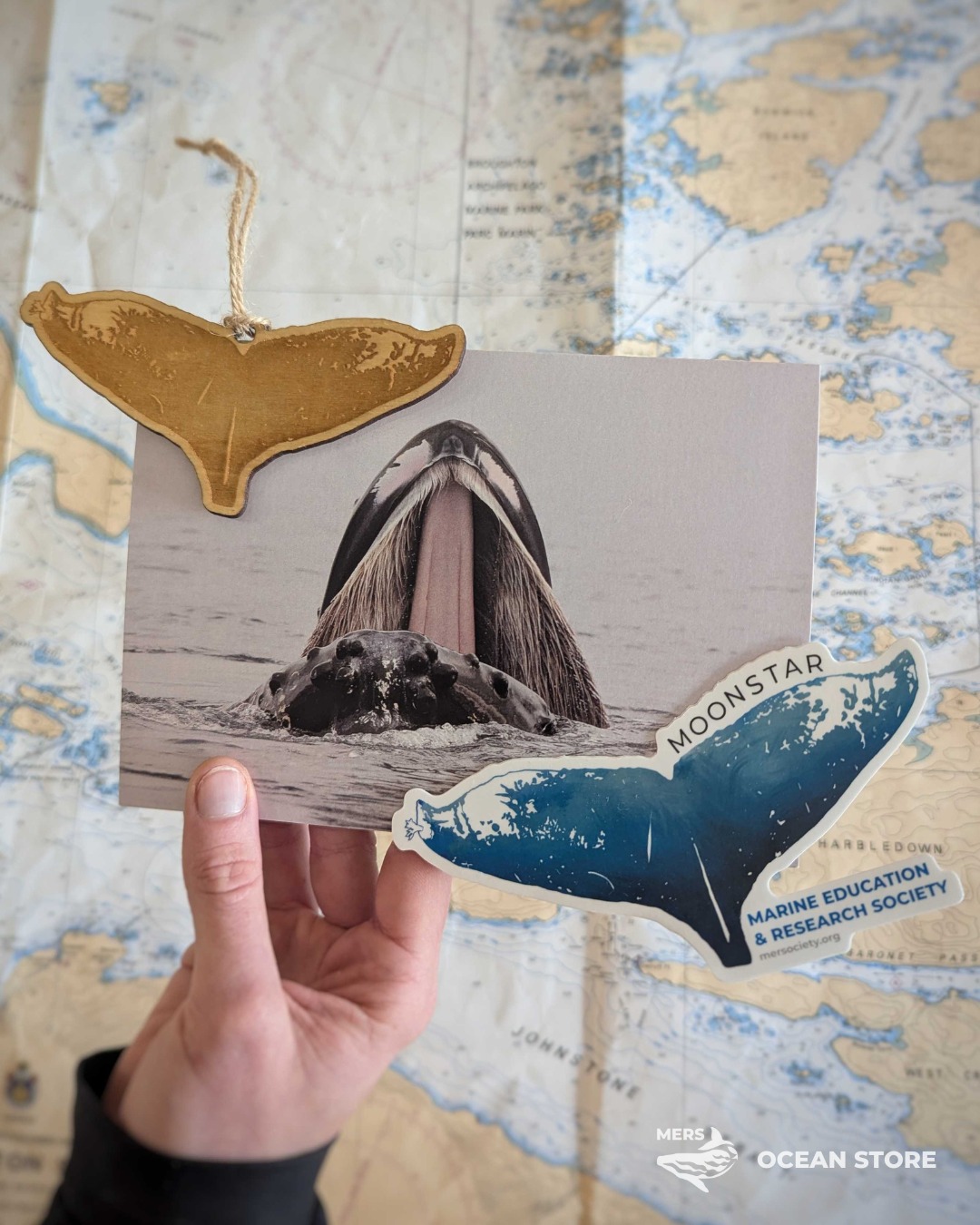Update May 2024: Where to watch Planet Earth III.
Also see our article featured on the BBC’s “Making Planet Earth III” page.
This blog is full of it – whale poo and how it enriches life on Earth.
That’s one of the key messages of the BBC’s Planet Earth III footage we were involved with. We spent many hours ensuring whale poo was filmed. That footage, with narration by Sir David Attenborough, will have aired for the first time in Europe on December 3rd, America on December 16th, and in Canada on April 21st.
While we’re clearly very serious scientists, you may notice an occasional crappy pun in this blog.
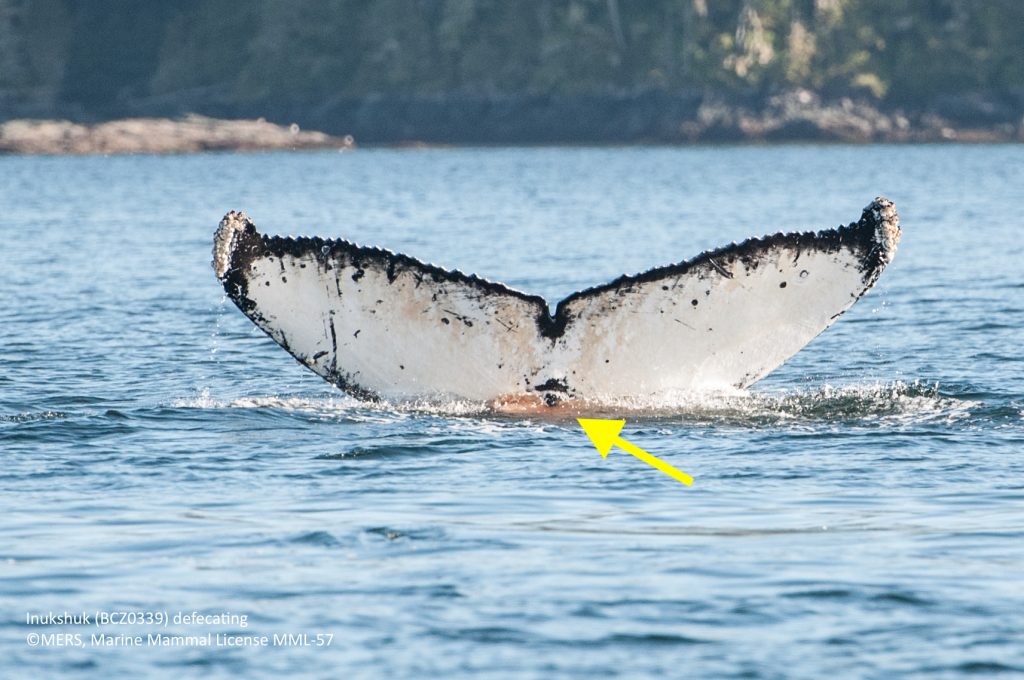
he has been eating a lot of krill.
Photo ©MERS, Marine Mammal License MML-57.
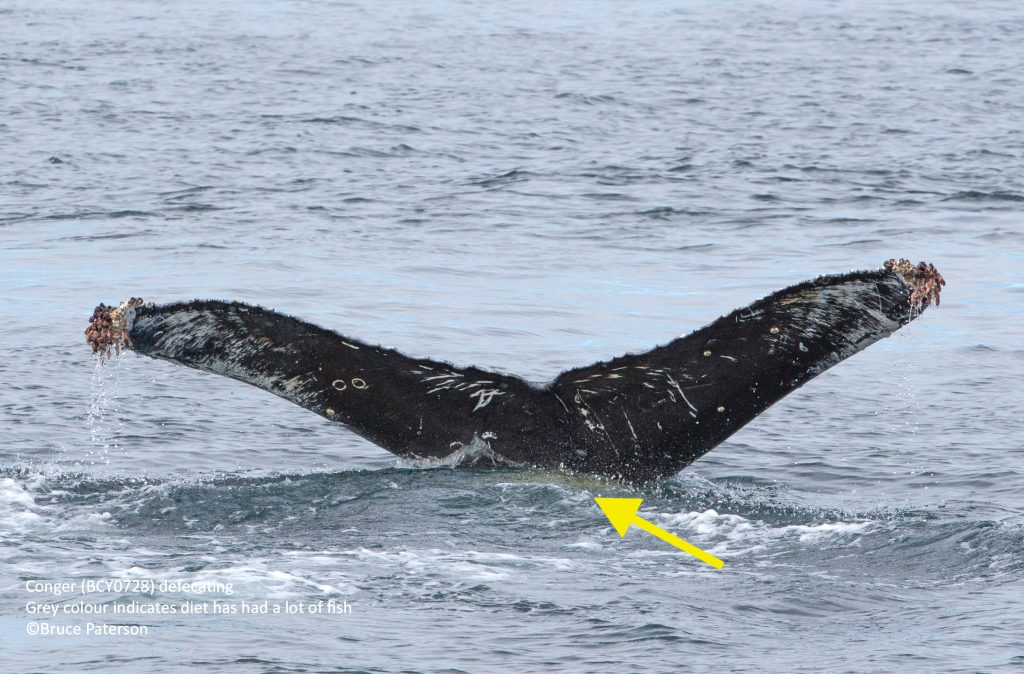

Why Whale Poo Is So Important
Whales may feed at depth but they always defecate at the surface. As a result they bring nutrients from deeper water to the surface. This is referenced as the “whale pump“ (Roman and McCarthy, 2010).
In the photos in this blog, you can see how this poo spreads out and does not sink. Thereby, the “flocculent fecal plumes” fertilize the plant-like plankton (phytoplankton) at the surface. With more phytoplankton, there is more food for the food web and more photosynthesis by which oxygen is made and carbon dioxide is absorbed.
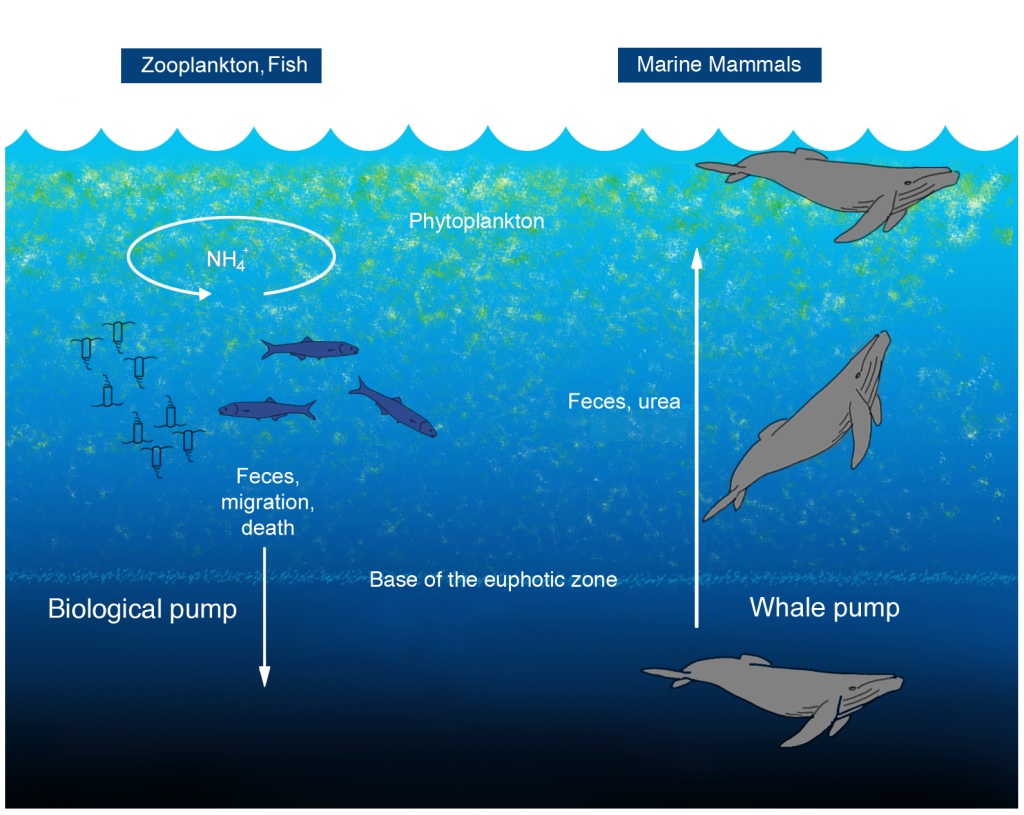
It’s poo-fect!
And it’s not just whale poo that helps we humans who have put too much carbon into the atmosphere. The whales are also literally acting as carbon sinks when they die and their bodies go to the bottom of the ocean.
It’s estimated that every large whale sequesters approximately 33 tons of carbon. That’s the equivalent of around 30,000 trees (Chami et al., 2019):
Oh, and baleen whales like Humpbacks also transport nutrients from the cold-water feeding grounds to the warm-water breeding grounds when they urinate. This is known as the Whale Conveyor Belt.
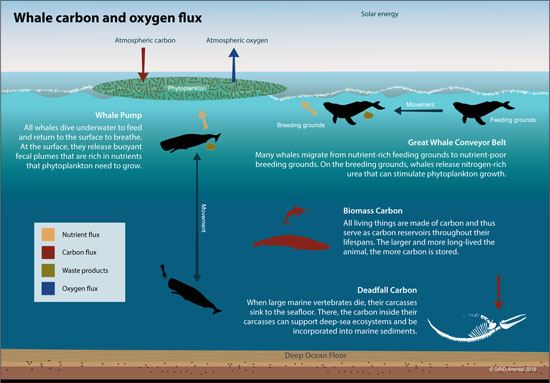
From the International Monetary Fund’s report “Nature’s Solution to Climate Change: A strategy to protect whales can limit greenhouse gases and global warming“ (Chami et al., 2019):
Despite the drastic reduction in commercial whaling, whales still face significant life-threatening hazards, including ship strikes, entanglement in fishing nets, waterborne plastic waste, and noise pollution. While some species of whales are recovering—slowly—many are not.
Enhancing protection of whales from human-made dangers would deliver benefits to humans, the planet, and of course, the whales themselves. This “earth-tech” approach to carbon sequestration also avoids the risk of unanticipated harm from suggested untested high-tech fixes. Nature has had millions of years to perfect her whale-based carbon sink technology. All we need to do is let the whales live.

Photo: Ocean Wise, Marine Mammal License MML-18.
How we hope that by being involved with Planet Earth III will lead to meaningful conservation action – for the whales and all that depends on them.
Whales inspire. Whales connect. Whales aid human survival. They remind us of mistakes made and capacity for positive change. May human values contribute to a future deserving of whales.
Please see our website for how you can get involved – www.mersociety.org
Sign up for our newsletter to see just how much your support fertilizes.

More from the International Monetary Fund’s report:
The carbon capture potential of whales is truly startling. Whales accumulate carbon in their bodies during their long lives. When they die, they sink to the bottom of the ocean; each great whale sequesters 33 tons of CO on average, taking that carbon out of the atmosphere for centuries. A tree, meanwhile, absorbs only up to 48 pounds of CO a year.
Protecting whales could add significantly to carbon capture because the current population of the largest great whales is only a small fraction of what it once was. Sadly, after decades of industrialized whaling, biologists estimate that overall whale populations are now less than one-fourth what they once were. Some species, like the blue whales, have been reduced to only 3 percent of their previous abundance. Thus,the benefits from whales’ ecosystem services to us and to our survival are much less than they could be. But this is only the beginning of the story.
Wherever whales, the largest living things on earth, are found, so are populations of some of the smallest, phytoplankton. Not only do these microscopic creatures contribute at least 50 percent of all oxygen to our atmosphere, they do so by capturing about 37 billion metric tons of CO , an estimated 40 percent of all CO produced. To put things in perspective, we calculate that this is equivalent to the amount of CO captured by 1.70 trillion trees—four Amazon forests’ worth—or 70 times the amount absorbed by all the trees in the US Redwood National and State Parks each year. More phytoplankton means more carbon capture. In recent years, scientists have discovered that whales have a multiplier effect of increasing phytoplankton production wherever they go. How? It turns out that whales’ waste products contain exactly the substances—notably iron and nitrogen—phytoplankton need to grow. Whales bring minerals up to the ocean surface through their vertical movement, called the “whale pump,” and through their migration across oceans, called the “whale conveyor belt” (see Chart 1). Preliminary modeling and estimates indicate that this fertilizing activity adds significantly to phytoplankton growth in the areas whales frequent.
Despite the fact that nutrients are carried into the ocean through dust storms, river sediments, and upwelling from wind and waves, nitrogen and phosphorus remain scarce and limit the amount of phytoplankton that can bloom in warmer parts of the oceans. In colder regions, such as in the Southern Ocean, the limiting mineral tends to be iron. If more of these missing minerals became available in parts of the ocean where they are scarce, more phytoplankton could grow, potentially absorbing much more carbon than otherwise possible . . .
If whales were allowed to return to their prewhaling number of 4 to 5 million—from slightly more than 1.3 million today—it could add significantly to the amount of phytoplankton in the oceans and to the carbon they capture each year. At a minimum, even a 1 percent increase in phytoplankton productivity thanks to whale activity would capture hundreds of millions of tons of additional CO2 a year, equivalent to the sudden appearance of 2 billion mature trees. Imagine the impact over the average lifespan of a whale, more than 60 years.”
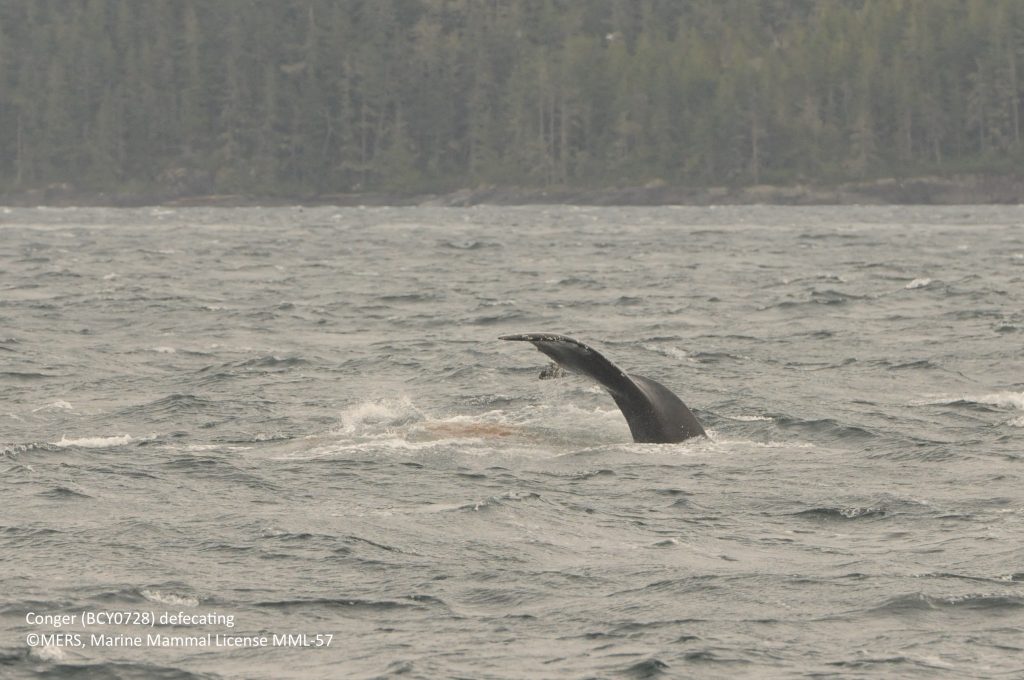
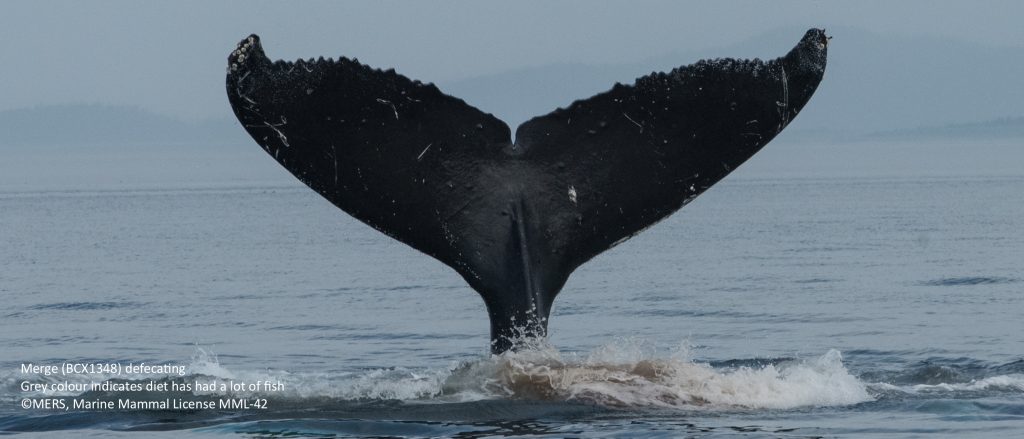
Related Links:
- BBC backgrounder on Episode 7 – https://www.bbc.co.uk/mediacentre/mediapacks/planet-earth-three-episode-5-human
- MERS Blog – Filming with the BBC – https://mersociety.org/news-media/education/plant-earth-iii/working-with-the-bbc-on-planet-earth-iii/

